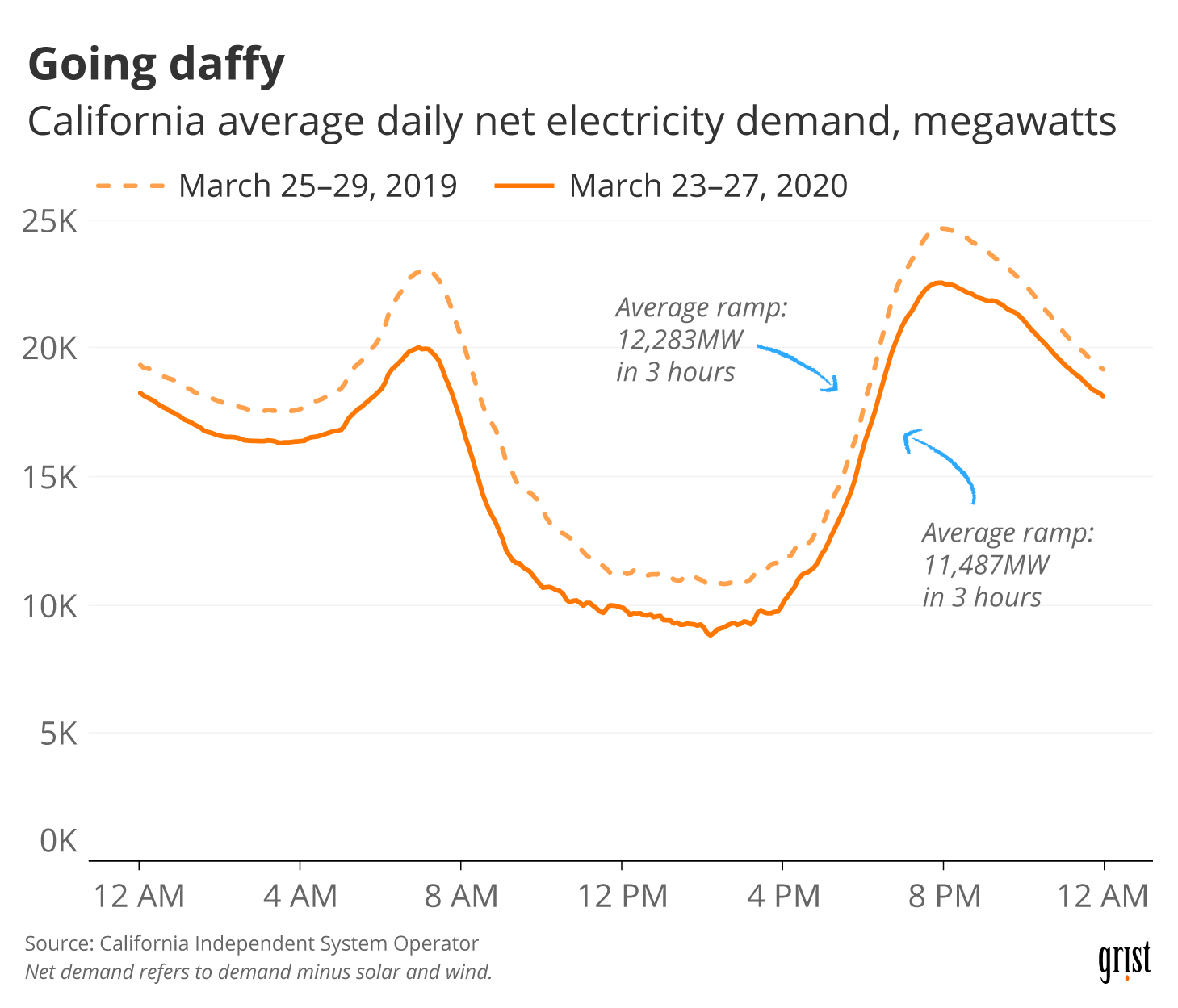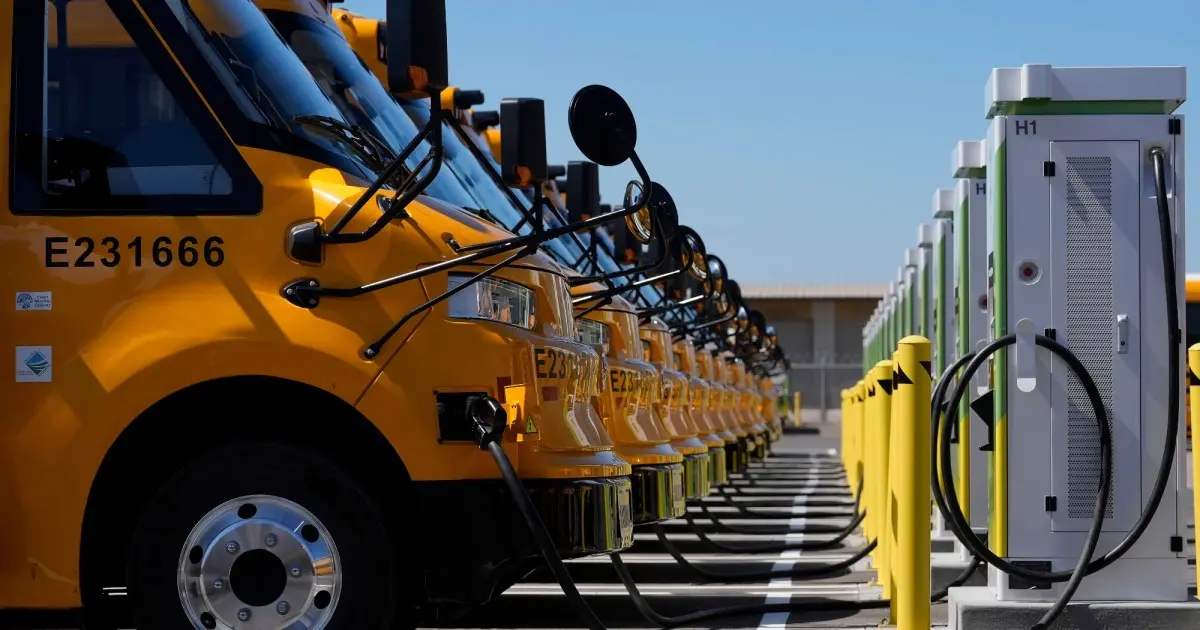Using school buses as grid storage is pretty genius, surprised this isn’t more common
That’s because you can only use them as grid storage when they’re sitting plugged in and you need infrastructure to make feeding all that power into the grid possible.
If you’re going to all that effort for storage that’s only functioning part of the time, it probably makes more sense to buy dedicated batteries which you can put wherever is convenient for the grid and will be available 100% of the time.
Your thinking the wrong way around. The batteries are already there, sitting around all throughout the day night and weekend. Its not like these are bought primarily to be energy storage, its just a side benefit. There is almost no extra effort. When they are not in use they already sit in a storage hall, plugged in to the wall. There is nothing special required to make this work.
They will only be used for a morning and an afternoon trip so they will still have 18h or so of uptime. Not using something thats otherwise unused would be a waste.
The batteries are there but you also need the expensive bidirectional chargers, software and hardware support in the vehicle, and you need the grid at some random school to be able to cope with tens or hundreds of kilowatts of feed-in power. There’s quite a lot involved in connecting a vehicle’s battery to the grid.
This setup only makes sense as long as batteries are expensive, and that won’t be the case for very long. The logistics of grid storage are much simpler when you don’t have the vehicle or chargers to deal with and can connect straight to a high voltage line.
Future this future that. The batteries are still expensive now.
expensive bidirectional chargers, software and hardware support in the vehicle
In comparison all those things are negligible in terms of cost. Its already completely standard equipment thats being mass produced.
tens or hundreds of kilowatts of feed-in power
No. This is not required. You can just feed into the grid through a standard wall plug or whatever is used in the US. This is a well proven method and works exactly like with solar power feed in. The current can be limited to whatever the hardware supports. However if you build charging stations, then these will already be capable of the power levels that you are talking about, so it wouldnt even be an issue.
School buses are primarily used twice per day, five days per week, and otherwise sit unused. The morning operation time (6-8am) is off-peak so it won’t have much impact on the grid to lose some storage at that time, though the afternoon run (2-4pm) would be right in the middle of peak load time, so that might be an issue:
[ref]
Probably the most sensible thing to do is have the bus batteries offset the school’s own daytime power demand (when all the lights and climate control are operating) and then recharge during off-peak hours.
I think they are an artifact of car dependency.
When you have the buses as batteries, they can not be used as buses. Most places use buses as a general public transport network and not just for school children. Hence they run through the entire day and need to be recharged over night. Students then just use the general public transport to go to school.
This is not a genius idea, but a waste of resources.
It’s never really occurred to me that the US is quite unusual in having fleets of buses dedicated to getting kids to and from school. I wonder why that is?
Because yeah, here in the UK kids either go under their own steam, are dropped off by their parents, or take regular public transport (or a regular bus that’s chartered for the school run twice a day).
Because us doesn’t have public transit, and is pretty spread out, so walking isn’t always feasible. A lot of people do drop kids off though, but it leads to huge traffic jams.
Why can they not just use the school buses to create a simple very basic bus based public transit system?
Probably liability? And maybe they only pay the drivers part time? Plus, the school buses are absolutely the cheapest money can buy. The seats are too close together for adults to use, and they still might not have seatbelts?
Likely has to do with population density.
Would it help that much on weekdays? It looks like peak loads are right about when the buses would be busy driving. But it would still be usefull for weekends I’d think.

Edit: looks like it changes quite a bit seasonally.
Edit 2: here’s solar and wind supply
 https://www.researchgate.net/publication/268074971_The_New_Hybrid_Model_of_Compressed_Air_for_Stable_Production_of_Wind_Farms
https://www.researchgate.net/publication/268074971_The_New_Hybrid_Model_of_Compressed_Air_for_Stable_Production_of_Wind_FarmsEvs are nice, but not a solution. Walkable bikable cities are the way we get out of this climate mess.
Electric buses are a positive though, as transit is still going to be needed.
What we should not be doing, though, is making laws that require EV buses instead of improving bus service in general.
Yeah. Good point.
I guess a thought I had is that instead of school busses, what if we used a public transit option for everyone? But then everyone would need to use it and we’re not there.
School busses are def better than everyone driving their own students to school and back. So that was something I missed in my initial post.
Im just over the whole “ev revolution” but taking that out on busses is silly.
Agree, but you’d need a lot more schools for that since currently they’re too big right now to walk/bike to from all points within the district.
If you live where it’s nice and warm year round sure. I personally have no interest in an eight mile commute to work in the snow and ice when it’s below freezing for months.
They can recharge mid-day when generation is highest, which helps balance supply, and in theory they could still help in the afternoon after they finish their routes say 5/6pm
Yeah you’d definitely charge mid day, but you don’t need reverse charging for that. I’d think you’d size the battery just large enough for your route. So there wouldn’t be much energy left over to put into the grid. Maybe when the bus is new or when they don’t need to run the AC or heading you’d be able to put more energy back into the grid?






